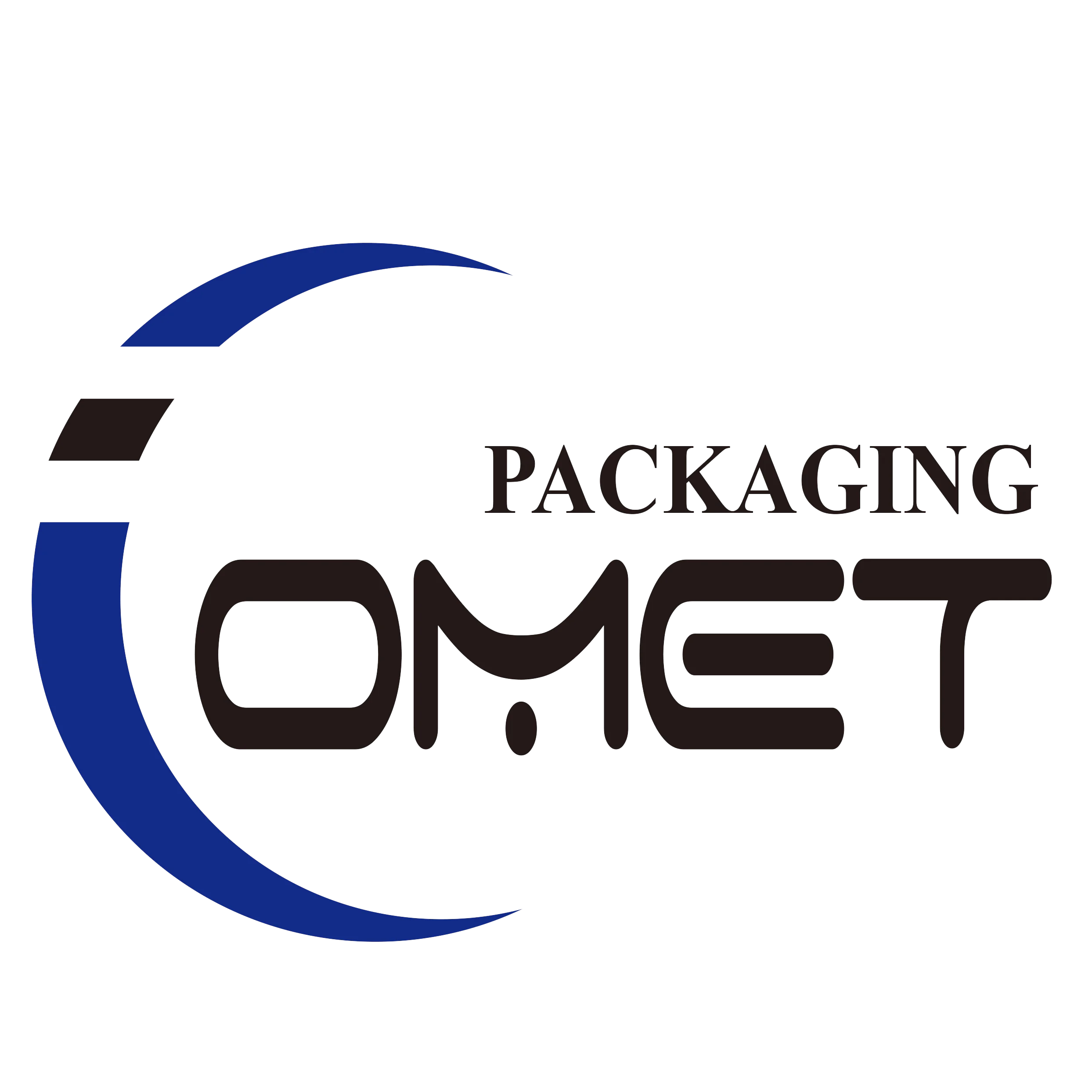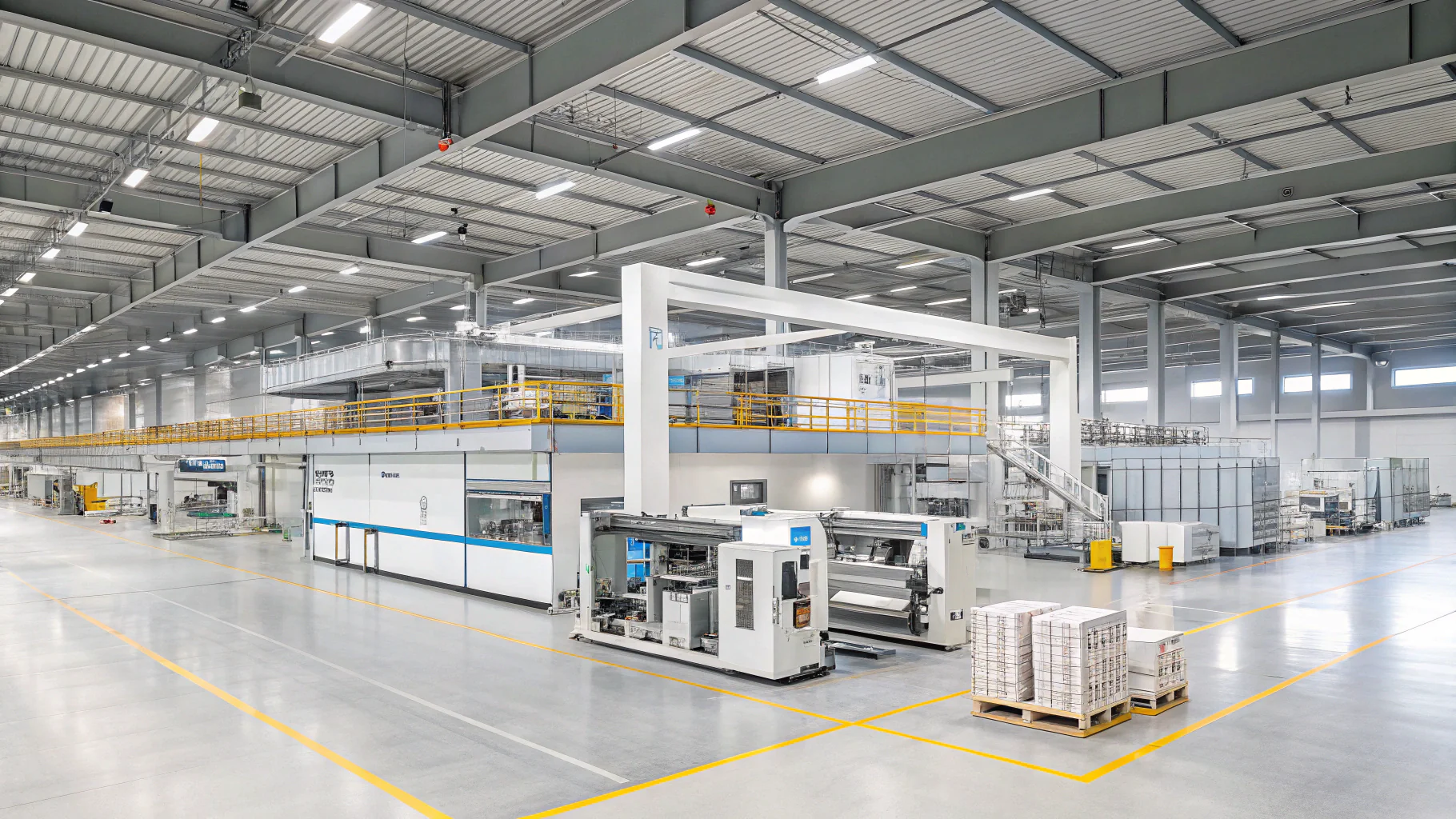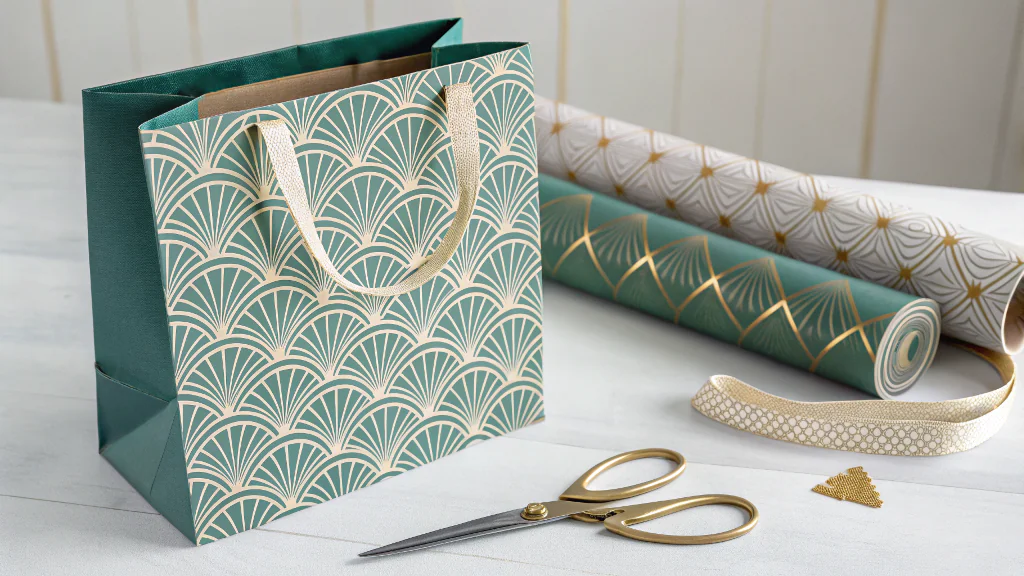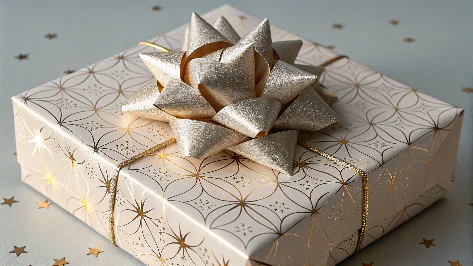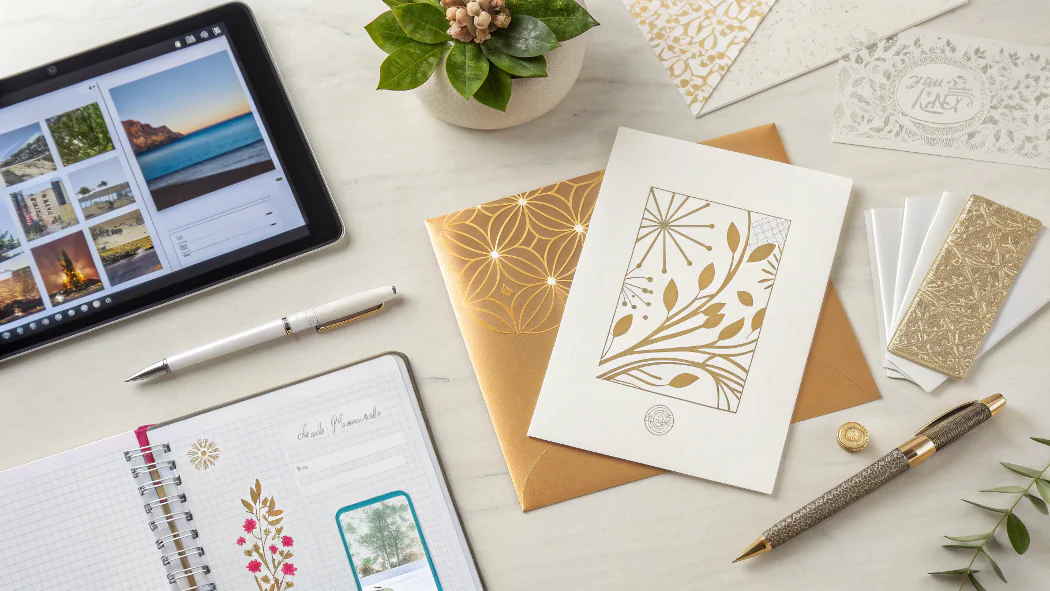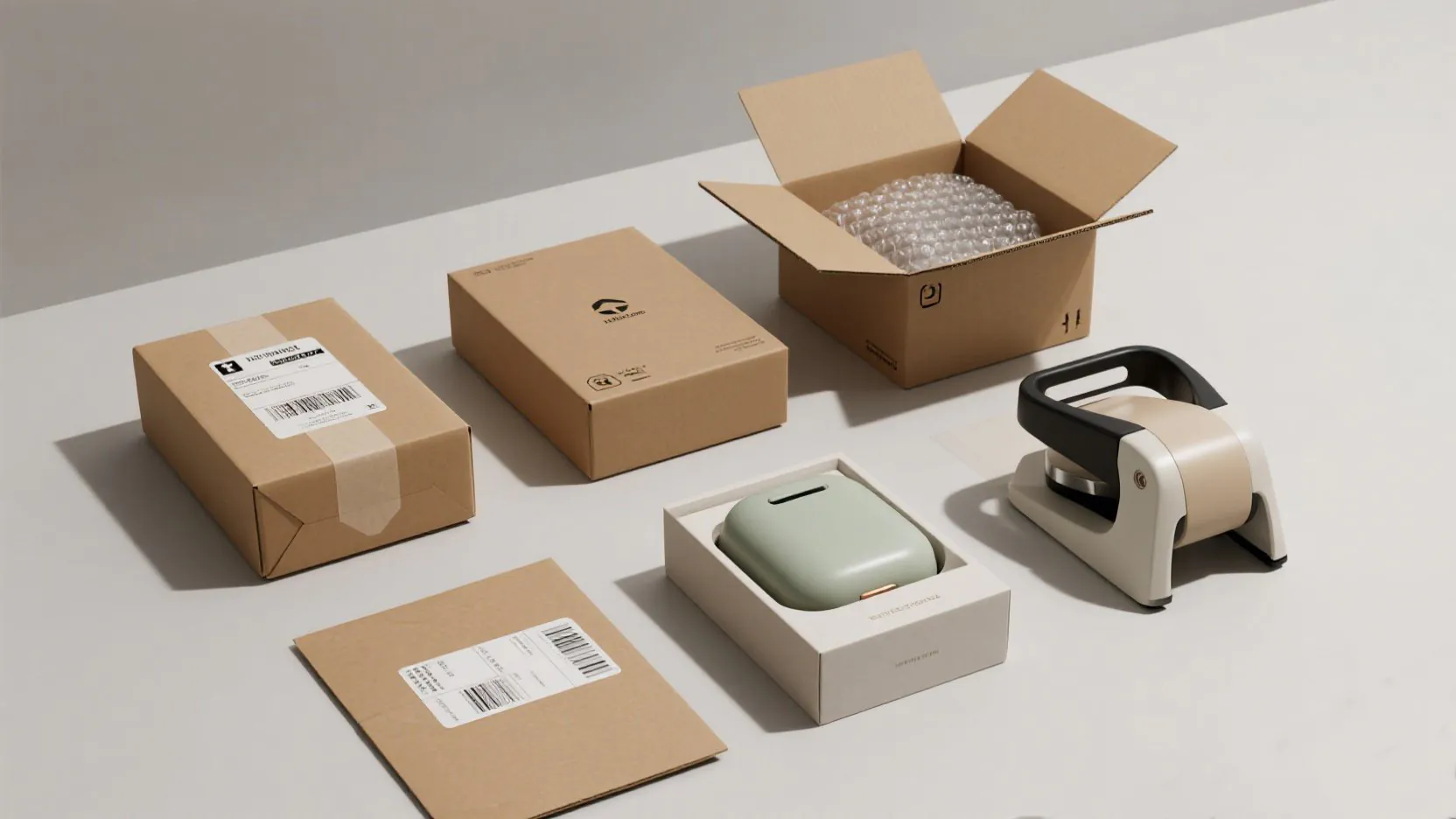How Do You Make a High-Quality Paper Box From Scratch?
Struggling with flimsy packaging? Worried that poor-quality boxes are hurting your brand’s image? Learn the essentials to create a professional paper box that truly represents your quality.
The core process includes choosing the right paper, creating an accurate design template (die line), adding your own design, precise cutting and creasing, and finally professional folding and gluing. The professional packaging process ensures that the box is strong and beautiful, which can protect your product and leave a deep impression on your customers.
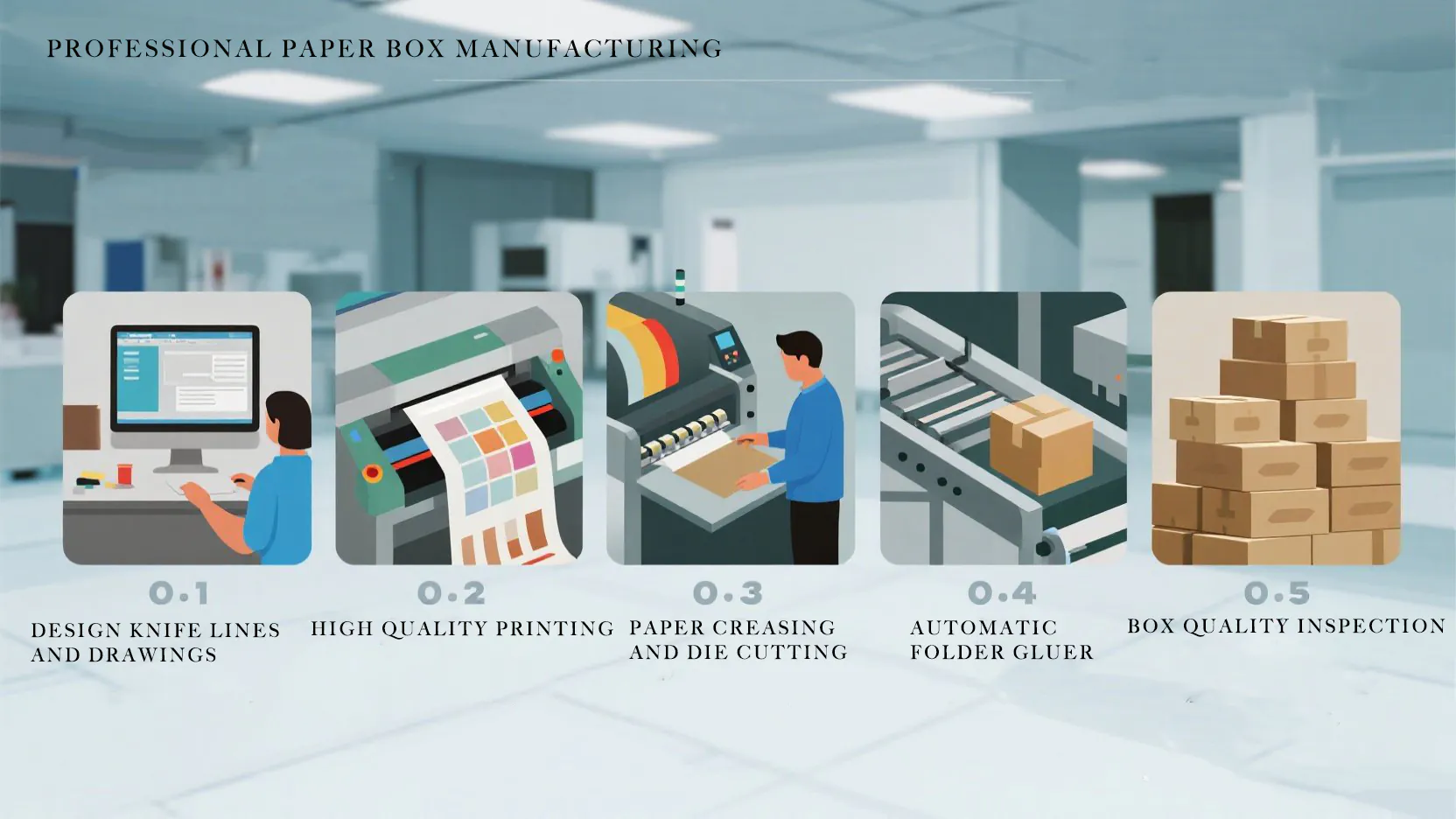
That might sound simple, but there’s a huge difference between a quick DIY project and a professionally manufactured box that can be scaled for a business. As someone who has spent over a decade in this industry, I’ve seen how getting the details right at each step can make or break a product’s presentation. Understanding this professional process is crucial for any brand owner, marketer, or procurement manager looking to create packaging that stands out. It’s not just about holding an item; it’s about creating an experience from the moment your customer receives their package. Let’s dive into the steps that we, as professionals, take to turn a flat sheet of paper into a perfect box.
What’s the Best Paper Material for Your Box?
Are you overwhelmed by the variety of paper options? Worried that choosing the wrong paper packaging box will make it look cheap? Don’t worry, I will help you find the perfect material that is both durable and high-quality, so as to make a packaging box that is completely suitable for your product.
The best material depends entirely on your product and brand goals. Kraft paper is strong and eco-friendly, while corrugated board offers superior protection for shipping. For premium looks and printing, art paper is the top choice. Select based on weight, protection needs, and desired finish.
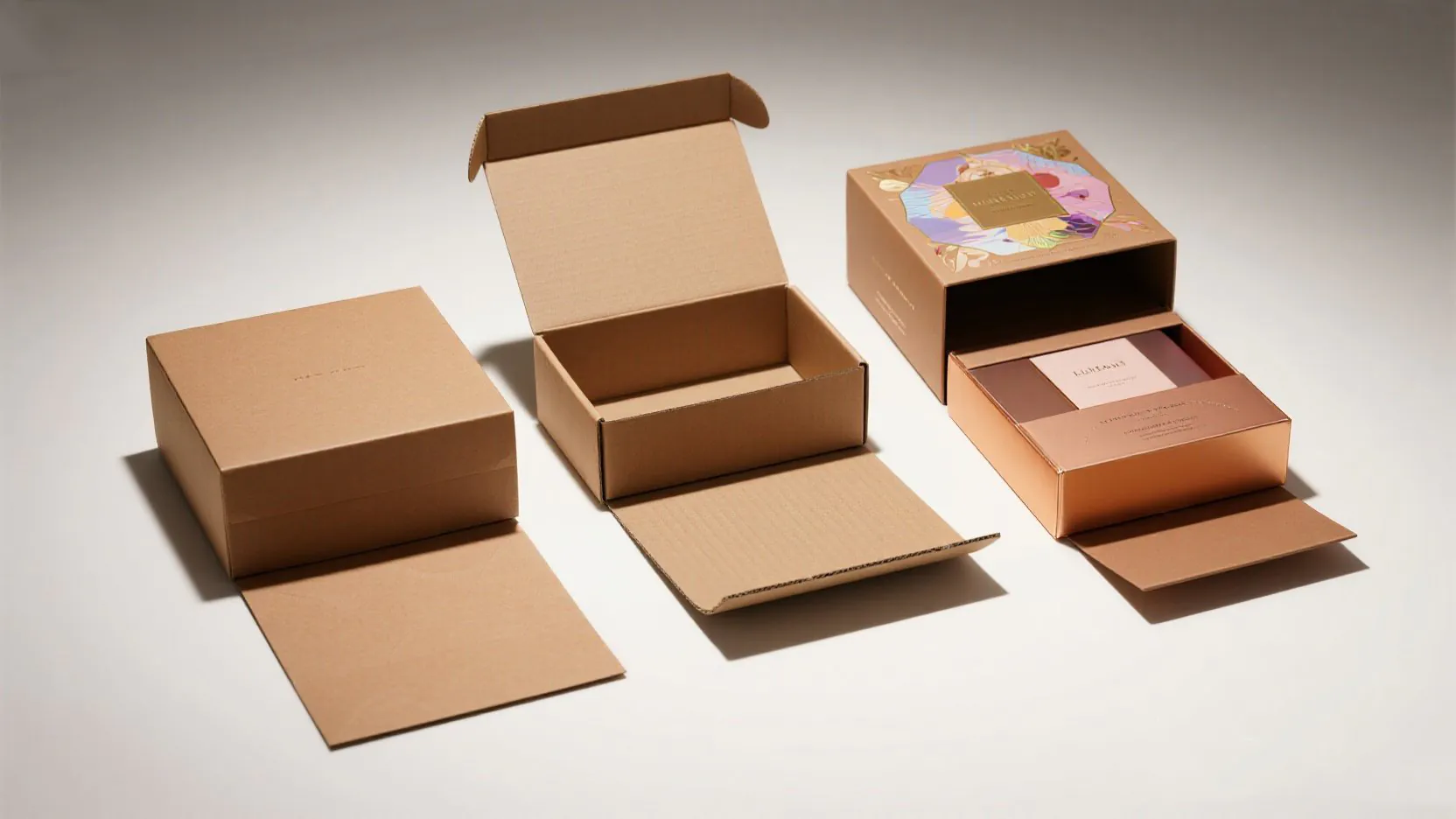
Choosing the right paper is the foundation of a great box. You’re balancing durability, aesthetics, and cost. At my company, Omet Packaging, this is the first conversation we have with a new client. For a heavy electronic gadget, we’d never recommend a thin art paper. For a delicate piece of jewelry, a thick, clunky corrugated mailer would ruin the luxury feel. It’s about matching the material to the mission. We are FSC-certified, which means our paper comes from responsibly managed forests. This is important not just for the planet, but for brands that want to communicate their commitment to sustainability. I remember a food client who switched to our FSC-certified Kraft paper, and their customers loved it. It reinforced their brand’s natural, organic image perfectly.
Here is a simple breakdown of common choices:
| Paper Type | Key Features | Best For |
|---|---|---|
| Kraft Paper | Strong, tear-resistant, eco-friendly look. | E-commerce, food, sustainable brands. |
| Corrugated Board | Multi-layered, excellent for protection, sturdy. | Shipping boxes, electronics, fragile items. |
| Art Paper/Coated | Smooth surface, excellent for high-quality printing. | Cosmetics, luxury gifts, apparel. |
| Greyboard/Chipboard | Rigid, thick, made from recycled paper. | High-end gift boxes, jewelry boxes, rigid setups. |
How Do You Create the Perfect Box Design and Dieline?
Does your current box design look sloppy? Are the folds and tabs misaligned? Discover the secret to creating a professional dieline for a flawless final structure.
A perfect box starts with a perfect dieline. This is a 2D digital template created with software like Adobe Illustrator. It maps out all the cut lines, crease lines, and glue tabs with total precision. This blueprint ensures every single box folds together perfectly.
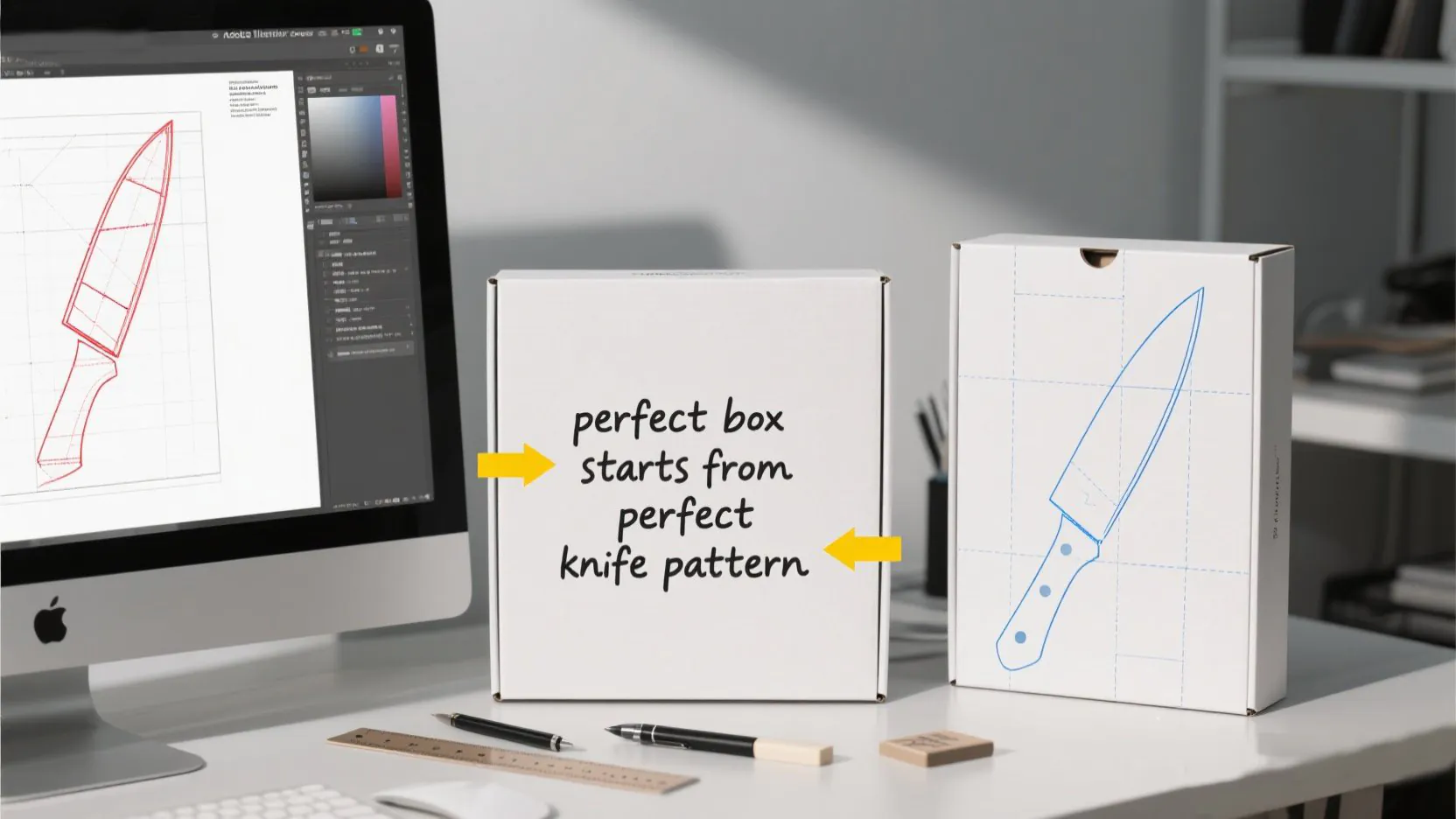
The dieline is the skeleton of your box. If it’s not right, nothing else will be. In my early days in sales, I saw firsthand how a poorly designed dieline led to boxes that wouldn’t close properly, causing delays and costing money. That’s why at Omet Packaging, our design team is meticulous. We use advanced software to create these templates. We consider the thickness of the paper, the product’s exact dimensions, and how the customer will open and close the box. This ensures a snug fit and a great user experience. We recently worked with a cosmetics brand that had uniquely shaped bottles. Their old boxes allowed the products to rattle around. We developed a custom dieline with a built-in insert that held the bottle securely. The client was thrilled because it eliminated breakage and elevated the unboxing experience. It a small detail that makes a huge difference.
Common Box Styles Guided by Dielines
- Straight Tuck End (STE): A classic style with top and bottom flaps that tuck into the box. Great for lightweight products like cosmetics or software.
- Reverse Tuck End (RTE)1: Similar to STE, but the top and bottom flaps tuck in opposite directions, often providing more structural stability.
- Mailer Box (Roll End Tuck Front)2: A sturdy and self-locking design common for e-commerce subscription boxes. It provides excellent protection without needing tape.
- Lid and Base Box (Telescope Box): A two-piece rigid box, often used for luxury items like watches, jewelry, or high-end gifts. It provides a premium, weighty feel.
What Are the Key Steps in Professional Box Manufacturing?
Ever wonder how a flat sheet of paper magically becomes a finished box? Does the factory process feel like a black box? I’ll pull back the curtain on professional printing and finishing.
Professional manufacturing is a multi-stage process. First, we print the design onto the flat paper sheets. Then, we apply surface finishes like lamination or foil. After that, machines die-cut and crease the sheets, and finally, they are folded and glued into their 3D shape.
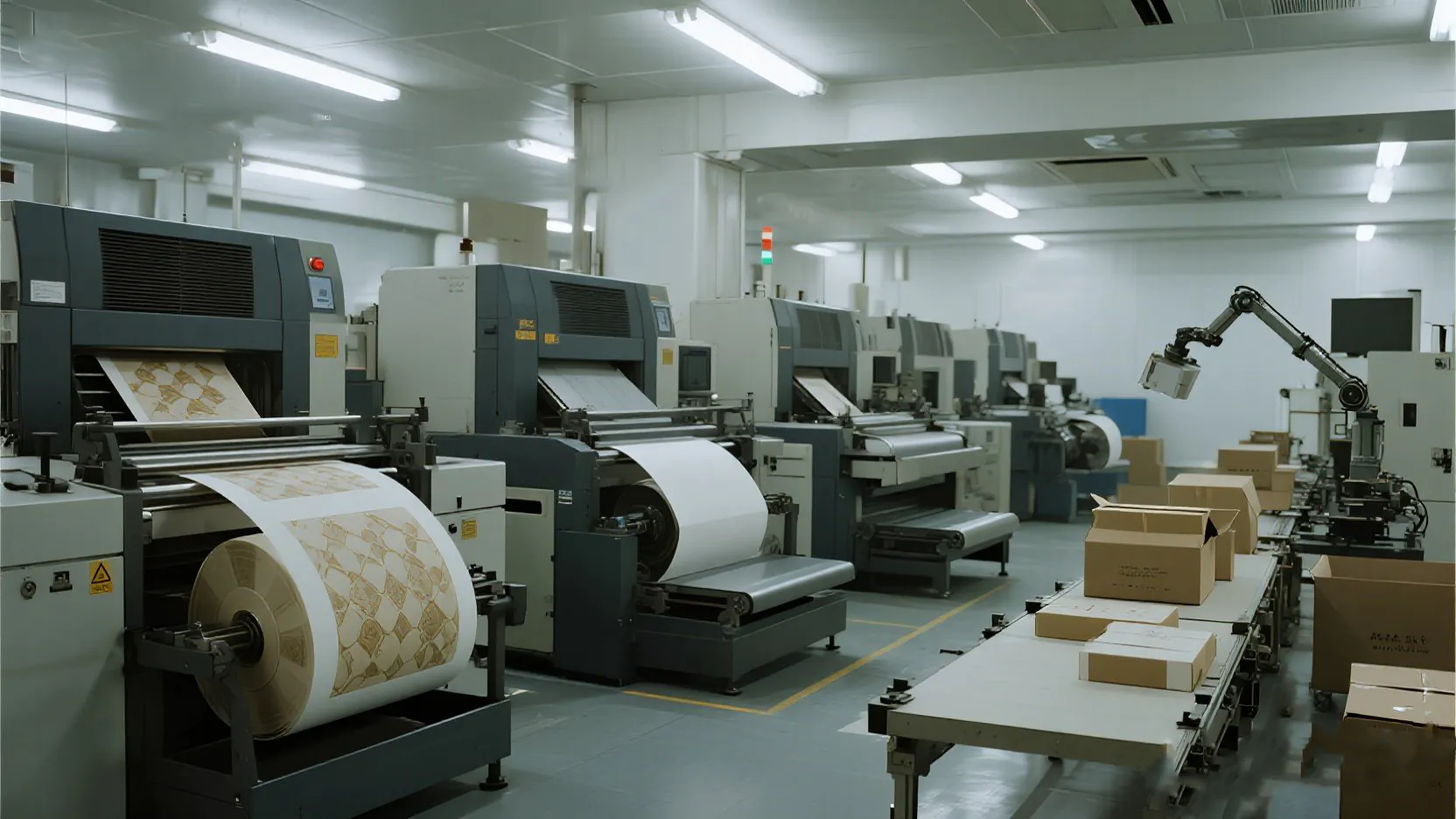
This is where the magic happens, but it’s all driven by technology and precision. Once the dieline is approved, the first step is printing. We use state-of-the-art offset printing presses to ensure brand colors are perfectly matched, whether it’s a specific Pantone shade or a complex CMYK image. Next comes surface finishing. This is how you add that "wow" factor. A matte lamination can give a soft, luxurious feel, while a gloss finish makes colors pop. We often use techniques like foil stamping or embossing for our clients in the jewelry and high-end gift sectors. I’ll never forget a client’s reaction when they saw their simple logo stamped in gold foil for the first time; it instantly made their packaging look ten times more expensive. After finishing, the sheets go to the die-cutting machine. This machine uses the dieline as a guide to cut out the box shape and press in the fold lines simultaneously. Finally, automated machines fold and glue the boxes at incredible speed. This whole process is overseen by our skilled team in a BSCI-certified facility, ensuring not just quality, but also that our operations are ethical and responsible.
Conclusion
Creating a great paper box combines material science, precise engineering, and creative finishing. By getting these steps right, you can create packaging that truly protects and elevates your brand.
